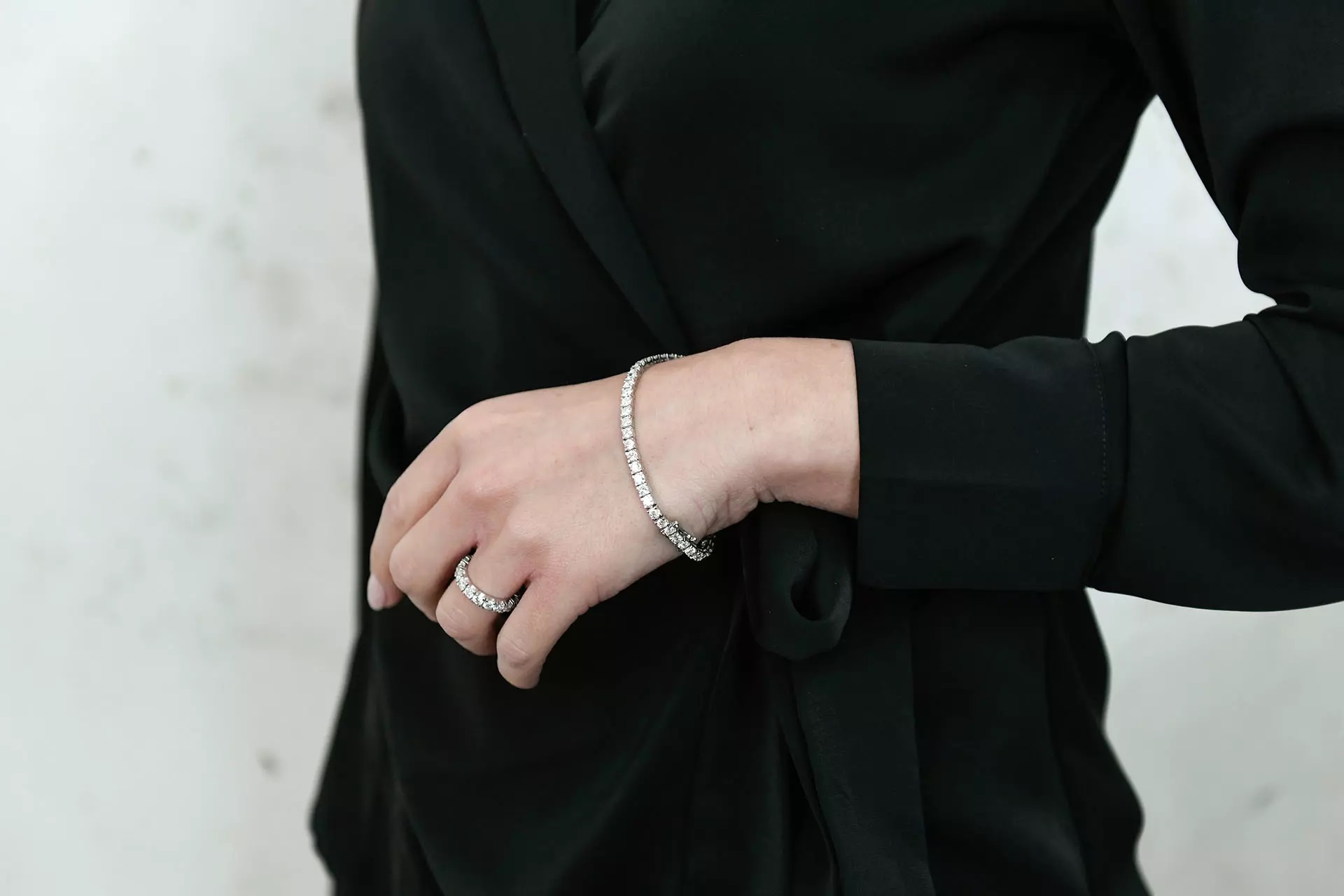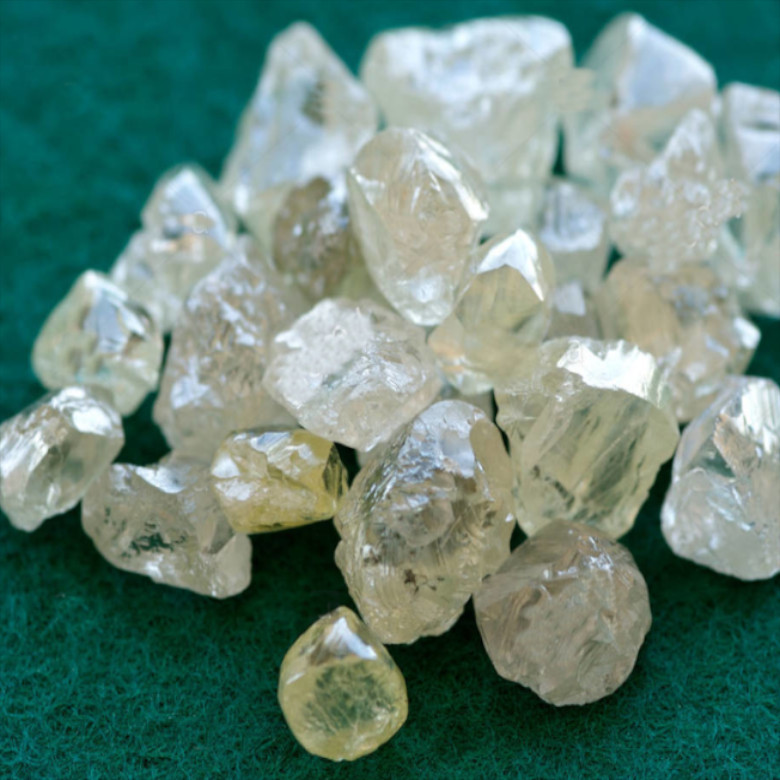
Diamond is one of the many forms in which carbon can be present in nature, in particular, diamond, consists of a dense crystalline network of carbon atoms arranged according to a tetrahedral scheme, known for its extreme hardness, and universally known as one of the hardest materials in the world as well as the hardest mineral in nature, widely spread in the world of jewelry and industry.
It is common to think that the first diamonds were found or extracted in India in alluvial deposits along the rivers Godavari and Krishna, and initially used as precious religious relics, in addition to being considered precious already 6,000 years ago, this is what make think the Sanskrit texts that already mentioned the trade, in addition to the fact that in Buddhist works in the fourth century BC, in addition to the fact that there are indications about cutting techniques.
In addition to the above mentioned, there are Indian writings where some of the most important properties of diamond are mentioned, such as resistance, brilliance, regularity, the ability to scratch metals and the excellent refractive properties.
In Roman times the first diamonds were imported from ancient India and were used as engraving tools, the Chinese, who were not lucky enough to find diamond deposits in their country, in the past they did not appreciate them as jewelry, they much preferred jade, so much so that in some Chinese works dating back to the third century B.C. there are phrases and quotations that despise the value attributed to them by those who define foreigners, or Romans, Indians, and all Asian or Western cultures.
Important deposits were found in relatively recent times, in fact they are dated around the year 1800 in South Africa near the springs in the Orange River.
It is known that the popularity of this precious mineral had a long growing since the nineteenth century, thanks to the increased supply and improvement of the processing techniques of which cutting and polishing.
In order for the diamond to form, it needs some very special conditions, one of them is a high pressure that is necessary for their formation, this happens in the terrestrial mantle, coming back to us from a depth that varies from about 150 to 225 kilometers.
The diamonds are brought back to the surface embedded in a rock containing a lot of Kimberlite by volcanic conduits through the eruption, this gives rise to the diamantiferi chimneys of the deposits, Later, by erosion, the Kimberlite can crumble releasing diamonds in secondary alluvial deposits.
Diamond mining takes place within what are called primary and secondary deposits.
The primary deposits are those where the diamond is still embedded within the Kimberlite rock, while the secondary deposits are the exact opposite of the primary, and the diamonds are scattered among sedimentary rocks including sand and gravel, transported by rivers and deposited on alluvial soils.
Most diamond mines are well or open pit type.
It is known that the diamond because of its extreme hardness can be cut only and exclusively from other diamonds, and are able to preserve their polishing for very long periods of time, so, therefore, it is suitable to be worn daily, For this reason it is one of the minerals widely used in jewelry.
In order to be transformed into jewelry gems, the diamond involves very long, delicate and difficult operations, where any mistakes could result in heavy losses of large sums of money.
The most common form of cut of the diamond is the aesthetically round one, as well as the most famous and obviously the most loved, as well as being also the one that gives the most shine to the diamond, hence its name, brilliant cut.
This term identifies the round cut with 57 facets to which is added a lower board that is not always made.
The brilliant cut is considered the cut par excellence for this type of mineral, being also the one that best enhances the characteristics of refraction and light reflection.
Diamond or brilliant? This is the dilemma (quote Scespiriana totally desired).
The spread of this cut has led to one of the most epic misunderstandings, often, very often, the public tends mistakenly to identify the terms brilliant and diamonds as if they were synonymous, but in reality the term brilliant if used alone identifies only the type of round cut made on any stone, even of a synthetic nature, in fact all gems can be cut to brilliant, such as: rubies, zircons, topaz, quartz, sapphires, emeralds and aquamarine, but the aesthetic result is obviously very different given by the refractive indices.
In fact, with the term brilliant, we want to specify it again refers only to the type of cut, with all its 57 facets, the stone itself is the diamond, so bright and diamond do not indicate the same thing and are not the same thing.
Other types of cut, although known but less common than brilliant, are the brilliant oval cut, marquise (shuttles), huit-huit, emerald, carob, baguette, trapezoid, Dutch rose or rosette, the latter no longer used.
In addition to those mentioned above, we must also list the cut princess, rodiant, cushion and barion, cuts currently not considered historical but slowly are establishing themselves in the world of jewelry.

Color, Clarity, Cut, Caract… These are the four C’s that distinguish diamonds, and that in turn determine their value, namely:

Among the many famous diamonds there are some that stand out for their peculiarities, we list five:
The diamond, in addition to being the hardest mineral in the world, is also the most beautiful, as well as being the most expensive, but its price is defined (as we have seen within this article) from many factors, including the difficult availability and the extreme complexity in the realization and processing, that’s why we of the jewelry Onion since 1950 we take great care in the choice of diamonds that we use in our creations, such as: rings, earrings, bracelets, necklaces, brooches… Trying, in this way, to always ensure maximum sustainability, quality and craftsmanship excellence, to ensure that your investment is always proportionate to the purchase.
A diamond is a precious gem that lasts forever and for this must be chosen with care and meticulousness, in fact our productions, as we have already mentioned are handmade by professionals, in addition to dealing with those that are the most prestigious brands of manufacturers nationally and internationally, we like to mention some, such as: Chimento, Comete, Filodellavita, Unoaerre, Polello, Annamaria Cammilli, Rebecca and other brands of undisputed prestige that you can view and buy within our online sales portal or at our jewelry store Cipolla dal 1950 in Vicolo della guardiola 2 in Palermo.